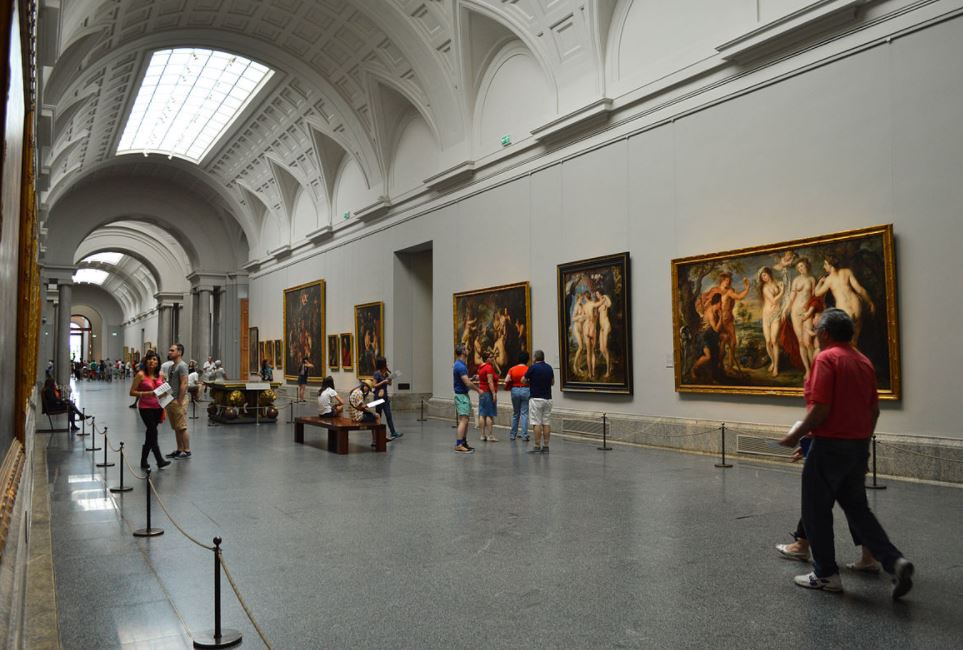Very few painters in history have left such a prominent mark on a particular art movement as Flemish Baroque painter Peter Paul Rubens. His exuberant style is instantly recognizable, and this is no different with this painting.
In this post, we’ll take a closer at some interesting facts about The Garden of Love by Rubens, one of his ultimate masterpieces which has a remarkable history as well!
1. It depicts rich people at a garden party
The Garden of Love was originally referred to as “The Garden Party,” and both names of the paintings directly refer to what is depicted. It shows people who are extremely well-dressed in an idyllic garden while they are having a picnic.
The most remarkable characteristic of the depicted people is that they appear to be rich and showing off their wealth while they are enjoying themselves in a relaxed atmosphere. The setting is typical of Baroque art as it portrays both exaggerated drama and grandeur.
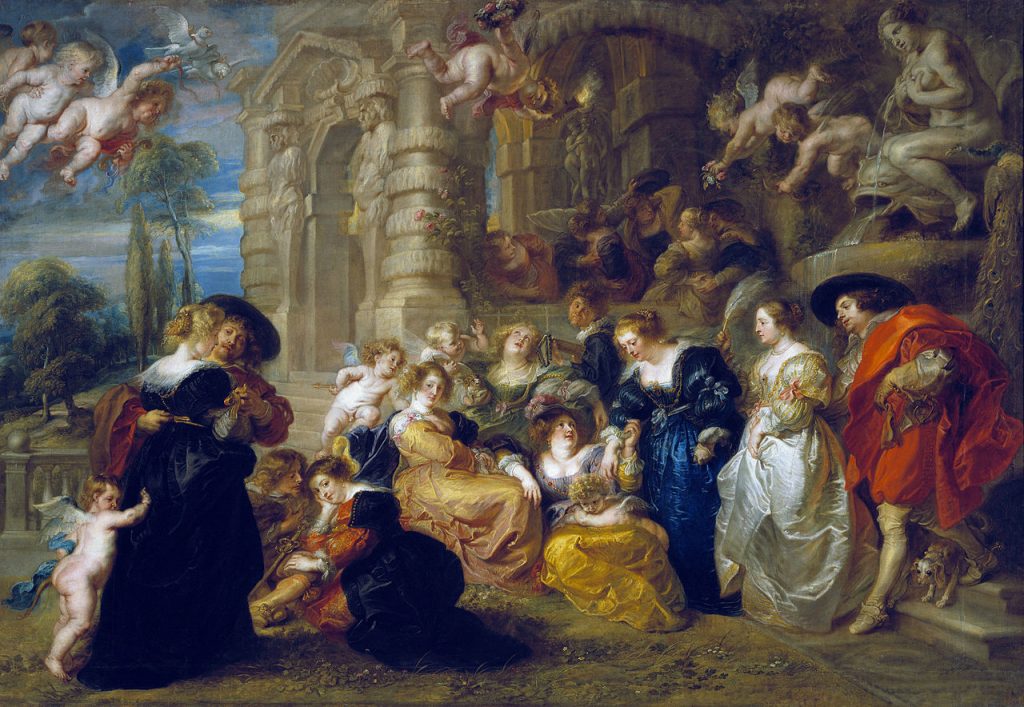
2. The painting has mythological elements as well
Apart from depicting the over-the-top garden party scene, the painting is also filled with mythological figures. The most prominent are the cupids who appear to be interacting with the guests of the party.
Some of the cupids appear right next to the guest. Their presence creates a fantastical environment that combines both realistic and mythological elements.

3. There are multiple symbols of matrimonial love
The painting is considered to be an allegory of matrimonial love. That’s because it includes numerous symbols related to conjugal love, including the cupids, the ultimate symbol of love.
Some other elements are:
- A pair of doves in the top left corner.
- The peacock represents Juno, the goddess of marriage.
- The dogs represent fidelity.
- Yolk carried by a cupid is a symbol of an upcoming marriage.
- The garden itself is an allegory of fertility or simply represents Paradise.
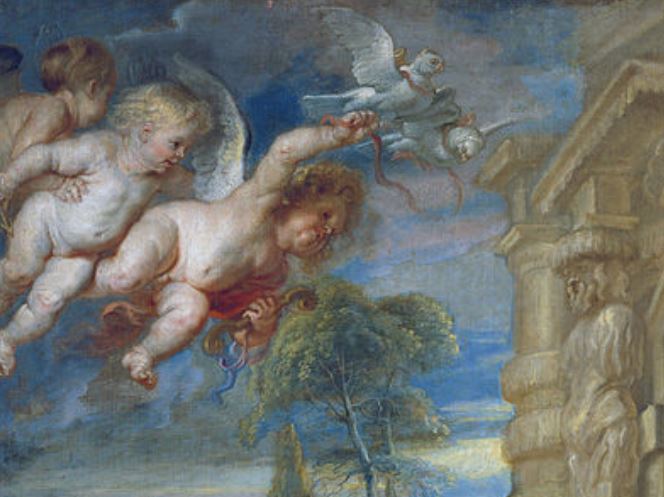
4. It was painted in the early 1630s on a special location
The exact date that the painting was completed is unknown but it’s assumed it was completed anywhere between 1630 and 1635, presumably in 1633. We know that Rubens’ first wife, Isabella Brant, died in the year 1626 and that he married her 16-year-old niece called Helena Fourment 4 years later.
This in combination with the fact that it appears that the Garden Party takes place in the garden of Ruben’s own house in Antwerp, modern-day Belgium, makes us assume that it was painted as a celebration of his second marriage.
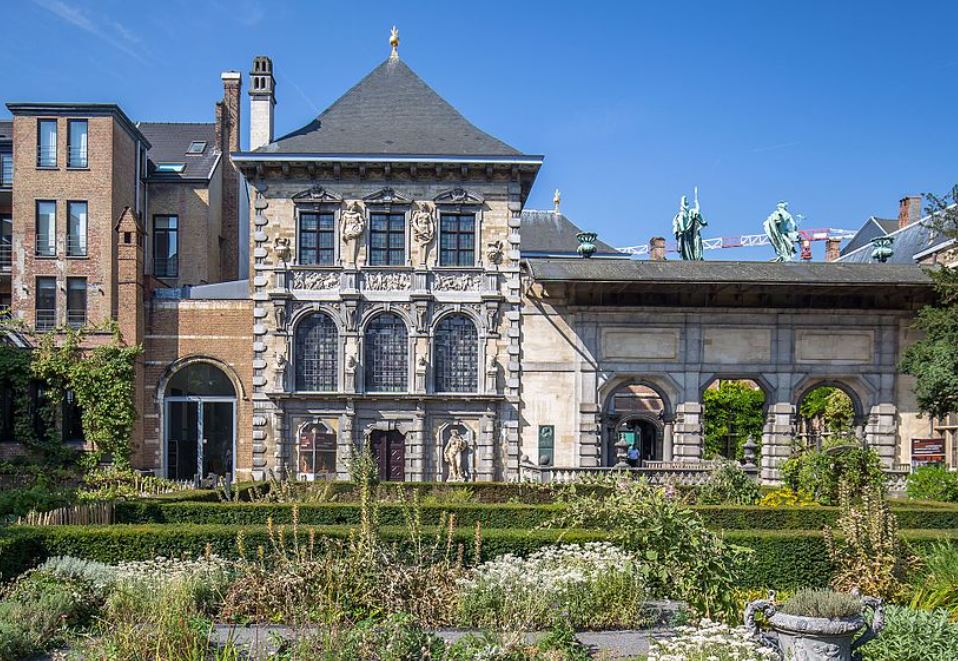
5. It’s assumed that Rubens painted himself and his wife as well
The theory that the Garden of Live by Rubens was painted as a celebration of his marriage is made strong by the fact that he depicted himself, along with his wife Helena Fourment, as well.
Rubens appears to be the man on the left who walks next to the lady in all black, who is assumed to depict his wife Helena. Apart from her appearance here, she was the subject of numerous other paintings as she stood model for various religious and mythological paintings created by her husband in the final decade of his life.
Yes, she is the rather voluptuous woman who appears in various Rubens paintings!
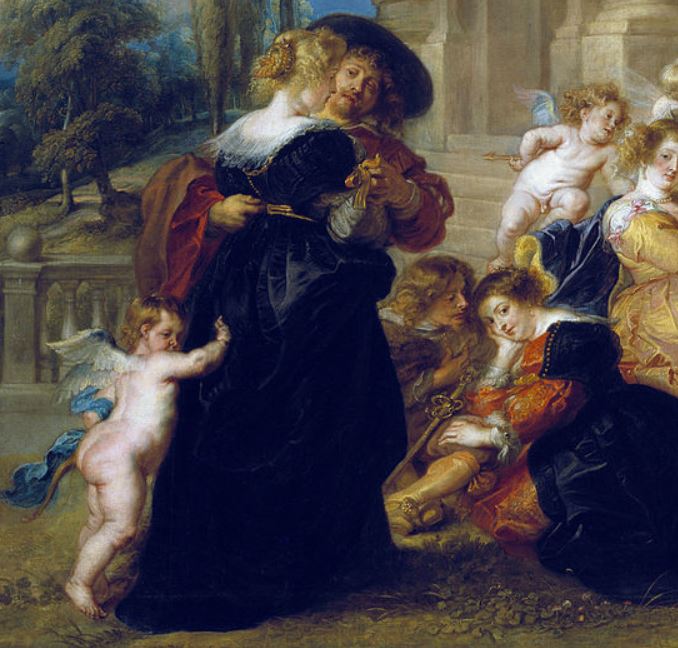
6. It’s a relatively large painting
While this particular painting is far from his largest work, it’s quite large compared to some other famous works of art.
It has dimensions of 199 x 286 centimeters (78 x 112 inches) and was executed with oil on canvas.

7. One of the fountains is a reference to another Rubens painting
At the top of the painting, right in the center, we can see a fountain that appears to depict 3 nude females. This is actually a reference to another famous painting by Peter Paul Rubens called “The Three Graces.”
This particular painting, which was created around the same time and for his own personal collection, depicts the 3 Greek goddesses of charm, charity, and gratitude. It’s one of the many paintings for which his wife Helena stood model.
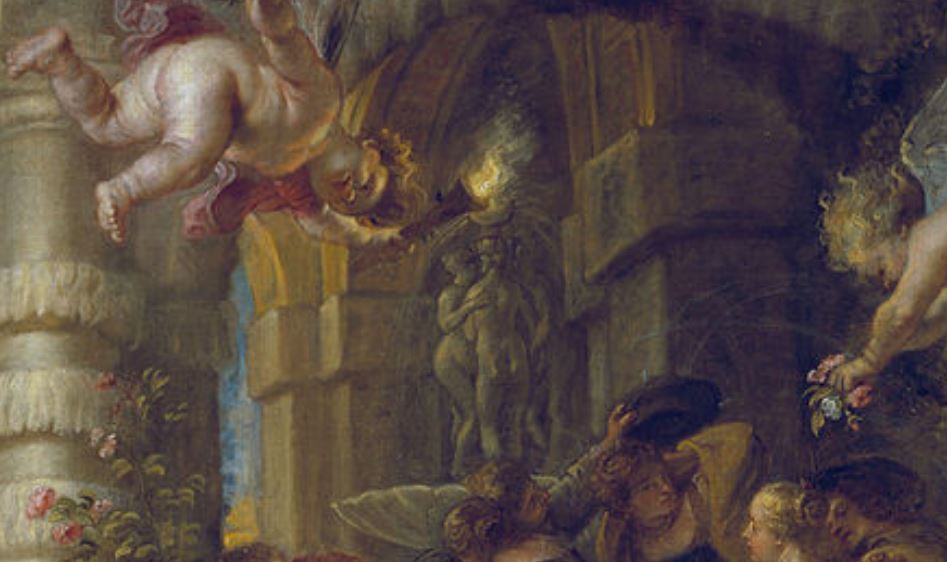
8. This style of painting is referred to as the “Merry Company”
The Garden of Love is Rubens’s version of a popular type of genre painting from the 17th century referred to as the “Merry Company.” This particular type of painting revolves around a group of people sitting together while they enjoy themselves, often with drinks and music.
Most of the Merry Company paintings were created during the Dutch Golden Age, and The Garden Party by Rubens can be described as the epitome of this genre painting of the Flemish Baroque.
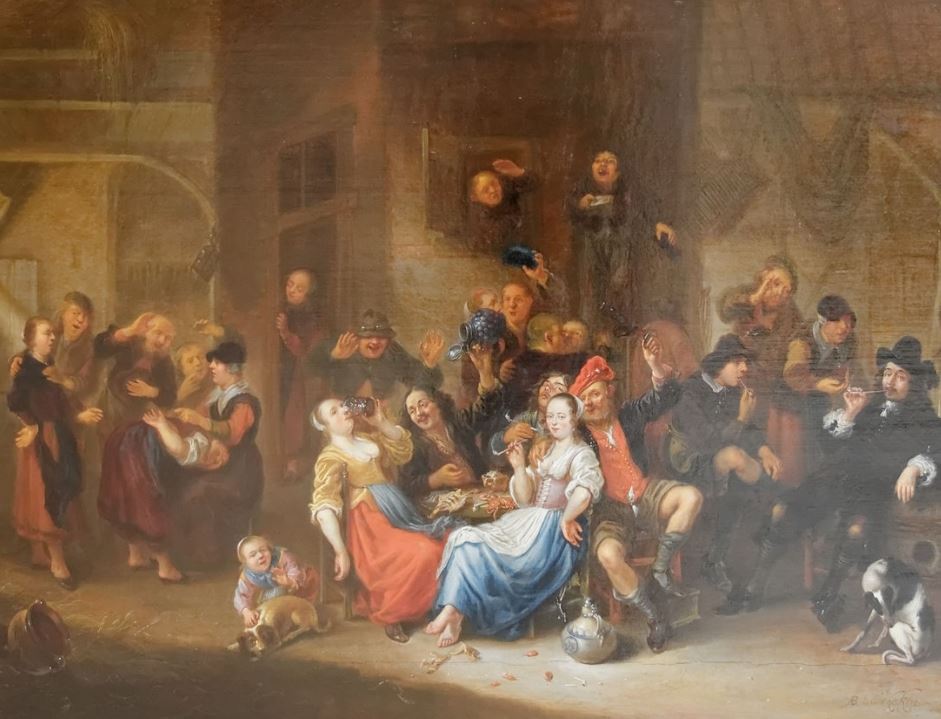
9. It once hung in a very special location in Spain
It’s assumed that this was another painting for Ruben’s personal collection because little is known about its whereabouts in the decades following his death in 1640. It appears for the first time in a listing in the year 1666 when it was mentioned as being part of the Royal Collection at the Real Alcázar in Madrid.
One of the most remarkable facts about the Garden of Love by Rubens is that it appeared to have hung in the Royal Palace of Madrid at that time, right on the bedroom wall of the King of Spain!
After all, Peter Pail Rubens wasn’t merely a painter but also a successful diplomat with connections in the highest circles. He had a strong reputation among Royalty all across Europe!

10. The painting is still located in the capital of Spain today
The painting was moved several times the following centuries and hung in both the Buen Retiro Palace, a former palace on the eastern outskirts of Madrid, and the current Royal Palace of Madrid.
It wasn’t until the year 1834 that it was moved to the “Museo Real de Pinturas,” now called the “Museo del Prado” in Madrid. This museum has arguably one of the finest collections of art in the world and welcomes nearly 3 million visitors every year.
This is where the Garden Party, along with Rubens’ “Three Graces,” is still on public display for you to admire today!
